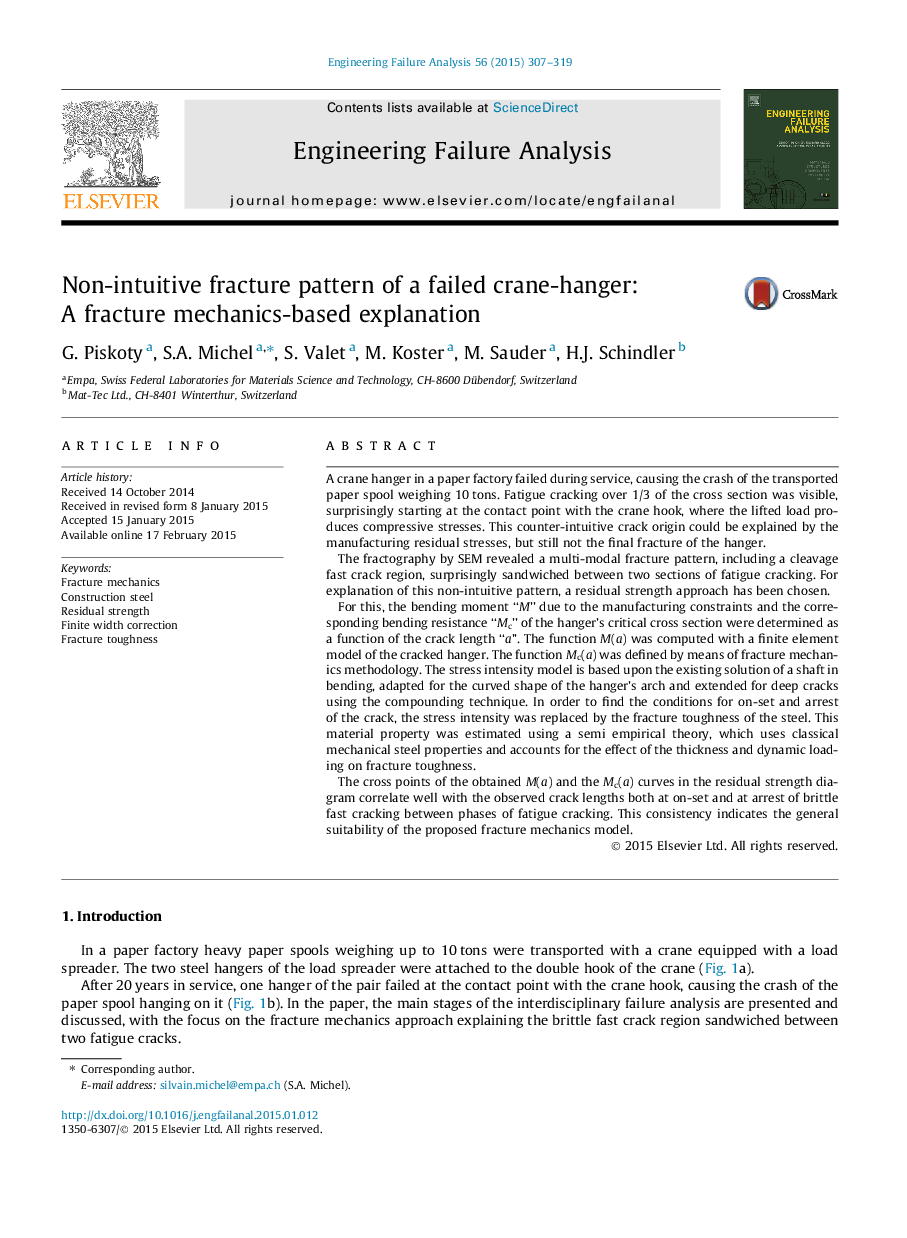| کد مقاله | کد نشریه | سال انتشار | مقاله انگلیسی | نسخه تمام متن |
|---|---|---|---|---|
| 768300 | 1462969 | 2015 | 13 صفحه PDF | دانلود رایگان |
• The non-intuitive fracture pattern of a broken hanger was analysed and explained.
• The manufacturing constrains in the crane hanger were quantified experimentally.
• The exsisting fracture mechanics solution for a bent shaft was adapted and extended.
• The fracture toughness of the steel was estimated using a semi empirical theory.
• The fracture pattern could be explained with the applied residual strength approach.
A crane hanger in a paper factory failed during service, causing the crash of the transported paper spool weighing 10 tons. Fatigue cracking over 1/3 of the cross section was visible, surprisingly starting at the contact point with the crane hook, where the lifted load produces compressive stresses. This counter-intuitive crack origin could be explained by the manufacturing residual stresses, but still not the final fracture of the hanger.The fractography by SEM revealed a multi-modal fracture pattern, including a cleavage fast crack region, surprisingly sandwiched between two sections of fatigue cracking. For explanation of this non-intuitive pattern, a residual strength approach has been chosen.For this, the bending moment “M” due to the manufacturing constraints and the corresponding bending resistance “Mc” of the hanger’s critical cross section were determined as a function of the crack length “a”. The function M(a) was computed with a finite element model of the cracked hanger. The function Mc(a) was defined by means of fracture mechanics methodology. The stress intensity model is based upon the existing solution of a shaft in bending, adapted for the curved shape of the hanger’s arch and extended for deep cracks using the compounding technique. In order to find the conditions for on-set and arrest of the crack, the stress intensity was replaced by the fracture toughness of the steel. This material property was estimated using a semi empirical theory, which uses classical mechanical steel properties and accounts for the effect of the thickness and dynamic loading on fracture toughness.The cross points of the obtained M(a) and the Mc(a) curves in the residual strength diagram correlate well with the observed crack lengths both at on-set and at arrest of brittle fast cracking between phases of fatigue cracking. This consistency indicates the general suitability of the proposed fracture mechanics model.
Journal: Engineering Failure Analysis - Volume 56, October 2015, Pages 307–319
